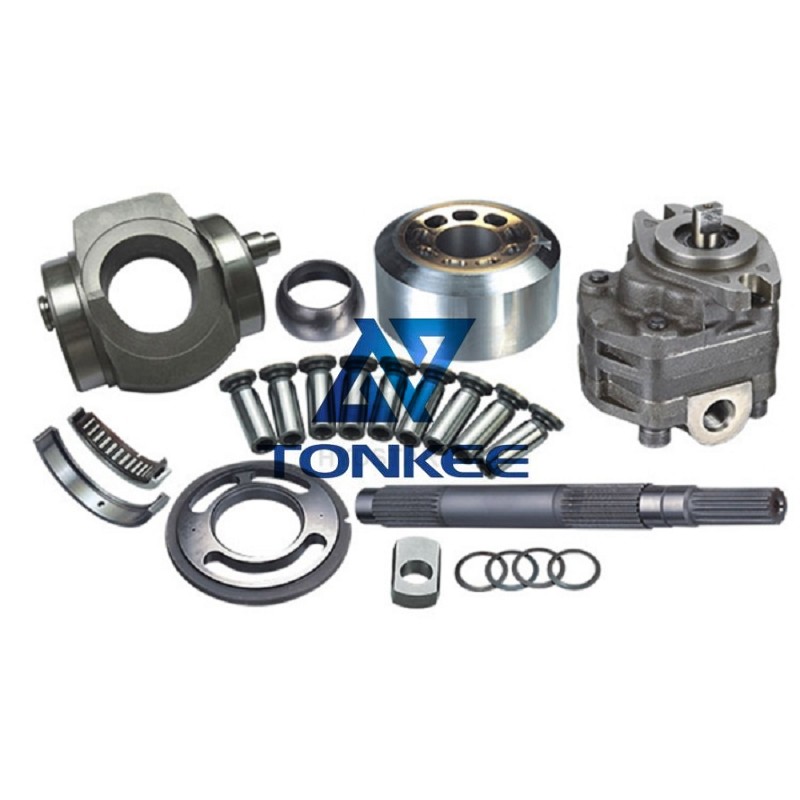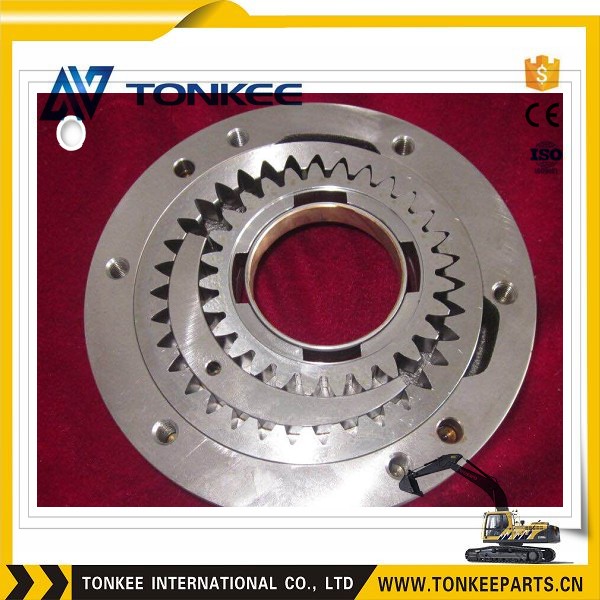
Piston Assembly: At the heart of the PSV2 Series Pump is the piston assembly.
This includes a piston, piston rod, and piston shoes. The piston moves within a cylinder to generate hydraulic pressure. The piston shoes help distribute the load evenly on the swashplate.
Swashplate: The swashplate is a critical component that plays a vital role in controlling the flow rate of the hydraulic fluid. It can be adjusted to vary the angle, thus regulating the pump's output. This adjustability is essential for different operating conditions.
Cylinder Block: The cylinder block is a key part that contains multiple cylinders where the pistons reciprocate. The design and number of cylinders can vary among different models of the PSV2 Series Pump.
Valve Plate: The valve plate is responsible for controlling the flow of hydraulic fluid into and out of the pump's cylinders. It houses the inlet and outlet ports and ensures efficient fluid transfer.
Port Plate: The port plate is a critical part for directing hydraulic fluid to and from the pump. It connects to the valve plate and routes fluid appropriately, ensuring smooth operation.
Bearing Housing: The bearing housing supports the swashplate and bearings, allowing for smooth and efficient rotation. High-quality bearings are used to reduce friction and wear.
Drive Shaft: The drive shaft is connected to the swashplate and is driven by the prime mover (often an electric motor or internal combustion engine). It transfers the rotational motion to the swashplate.
Pressure Relief Valve: Many PSV2 Series Pumps are equipped with built-in pressure relief valves that protect the pump and system from overpressure.
This ensures safe and reliable operation.
Mounting Flange: The mounting flange is used to attach the pump securely to the system, providing stability and alignment.
Materials and Coatings: The materials used in the construction of the pump, such as high-strength steel and advanced coatings, are selected for durability and resistance to wear and corrosion.
Flow and Pressure Ratings: The specifications of the PSV2 Series Pump include flow rate (usually in liters per minute or gallons per minute) and pressure rating (measured in bar or psi). Different models are available to meet varying performance requirements.
Efficiency: These pumps are designed for high efficiency, ensuring that they convert a significant portion of the input power into hydraulic energy, reducing energy consumption and heat generation.
Operating Temperature Range: The pump's operating temperature range is important, as it determines its suitability for various environments. It should be capable of functioning within specified temperature limits.
Noise and Vibration Levels: Low noise and vibration are essential for operator comfort and system longevity. These pumps are designed to minimize noise and vibration output.



 English
English Русский язык
Русский язык




